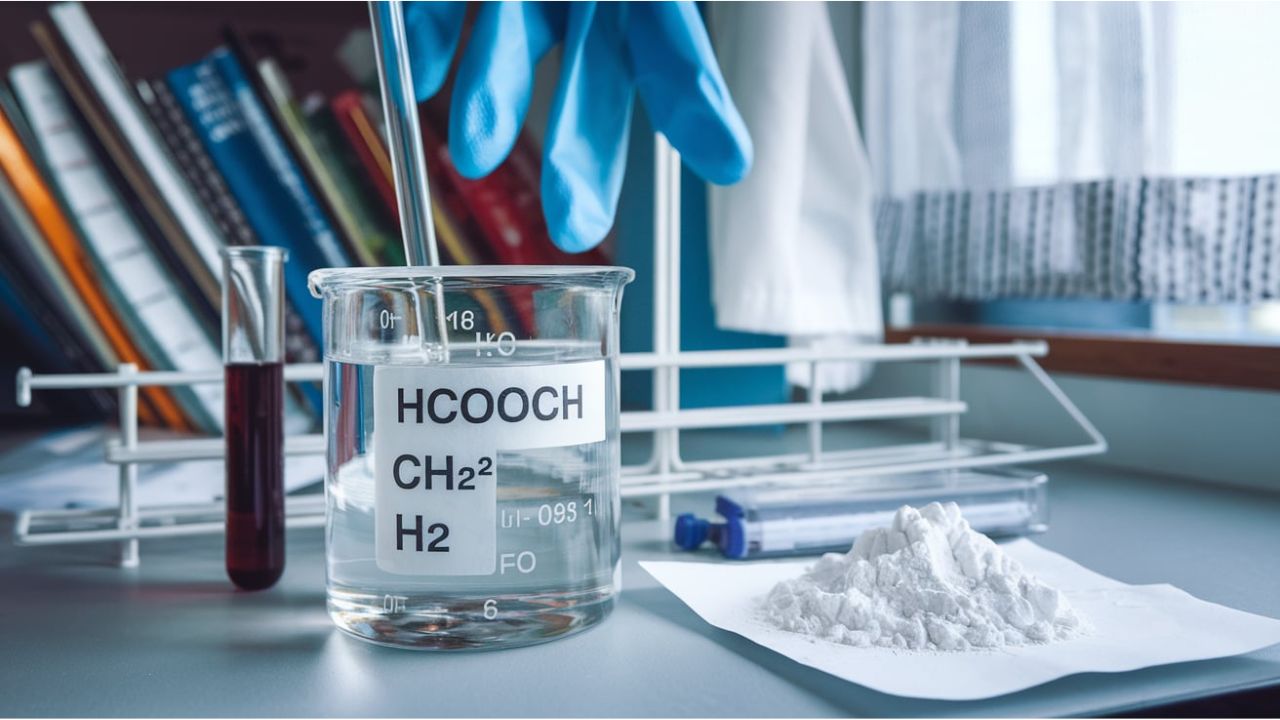The world of chemistry is filled with complex compounds, each contributing uniquely to scientific advancements and industrial applications. One such compound is Hcooch Ch2 H2o, which exhibits intriguing chemical properties and plays a role in various industrial processes. This article delves into the structure, properties, synthesis, and practical applications of Hcooch Ch2 H2o, highlighting its importance in the field of chemistry.
Understanding the Chemical Structure of Hcooch Ch2 H2o
The molecular composition of Hcooch Ch2 H2o suggests the presence of carbon (C), hydrogen (H), and oxygen (O) atoms. A closer analysis reveals its categorization as an organic compound due to the presence of hydrocarbon groups.
Structural Formula
The arrangement of atoms within Hcooch Ch2 H2o determines its physical and chemical characteristics, such as solubility, reactivity, and bonding behavior.
Bonding Characteristics
The compound features covalent bonds between carbon, hydrogen, and oxygen atoms, contributing to its stability and versatility.
Chemical Properties
Physical Properties
- State: Liquid at room temperature
- Color: Transparent or slightly yellow
- Odor: Mild, distinct chemical odor
Chemical Behavior
The compound reacts with acids and bases, forming various derivatives depending on reaction conditions. Additionally, it exhibits solubility in both water and organic solvents, making it suitable for diverse chemical processes.
Methods of Synthesis
Laboratory Synthesis
In controlled laboratory environments, Hcooch Ch2 H2o can be synthesized through specific chemical reactions involving hydrocarbon precursors and catalysts.
Industrial Production
Large-scale production methods optimize efficiency while ensuring high purity levels. These processes often incorporate modern technologies for quality control.
Applications of Hcooch Ch2 H2o
Industrial Applications
- Chemical Manufacturing: Used as a precursor in the synthesis of complex chemicals
- Solvent Properties: Acts as a solvent for certain organic reactions
- Catalysis: Plays a role in catalytic processes to enhance reaction efficiency
Scientific Research
In laboratories, Hcooch Ch2 H2o is employed for experimental purposes due to its stability and compatibility with various reagents.
Environmental Significance
The compound’s interactions with natural ecosystems are studied to understand its impact on environmental chemistry and pollutant degradation.
Safety and Handling Precautions
Personal Protective Equipment (PPE)
- Gloves and safety goggles are recommended when handling Hcooch Ch2 H2o.
- Proper ventilation should be maintained in workspaces to minimize exposure to vapors.
Storage Guidelines
- Store in a cool, dry place away from direct sunlight.
- Ensure containers are tightly sealed to prevent contamination and evaporation.
First Aid Measures
- In case of skin contact, rinse thoroughly with water.
- Seek medical attention if inhalation or ingestion occurs.
Environmental Impact and Sustainability
Biodegradability
Hcooch Ch2 H2o is biodegradable under certain environmental conditions, reducing its long-term ecological impact.
Green Chemistry Initiatives
Efforts are underway to develop eco-friendly production methods that minimize waste and energy consumption.
Analytical Techniques for Identification
Spectroscopy
Techniques such as infrared (IR) and nuclear magnetic resonance (NMR) spectroscopy are employed to identify and characterize Methyl formate hydrate.
Chromatography
Gas chromatography (GC) and high-performance liquid chromatography (HPLC) help in determining the purity and composition of the compound.
Advances in Research
New Derivatives
Researchers are exploring novel derivatives of Methyl formate hydrate with enhanced properties for industrial and pharmaceutical applications.
Reaction Mechanisms
Studies aim to elucidate the detailed reaction mechanisms involving Hcooch Ch2 H2o, contributing to a deeper understanding of chemical processes.
Comparison with Similar Compounds
Structural Differences
Minor variations in molecular structure can lead to significant differences in chemical behavior and applications.
Functional Applications
While similar compounds may share solvent properties, Methyl formate hydrate often outperforms due to its unique chemical profile.
Challenges in Application
Stability Issues
Under certain conditions, the compound may undergo degradation, limiting its shelf life.
Cost of Production
The synthesis and purification processes can be costly, impacting its commercial viability.
Future Prospects
Innovation in Synthesis
Researchers focus on developing cost-effective and sustainable synthesis methods for large-scale production.
Expanded Industrial Applications
Researchers expect Hcooch Ch2 H2o to find applications in emerging fields such as nanotechnology and advanced materials as they discover new properties.
Methyl formate hydrate stands as a fascinating chemical compound with a wide range of applications and properties that continue to capture the interest of researchers and industries alike. By understanding its structure, properties, and uses, scientists and professionals can harness its potential for innovation and progress.











